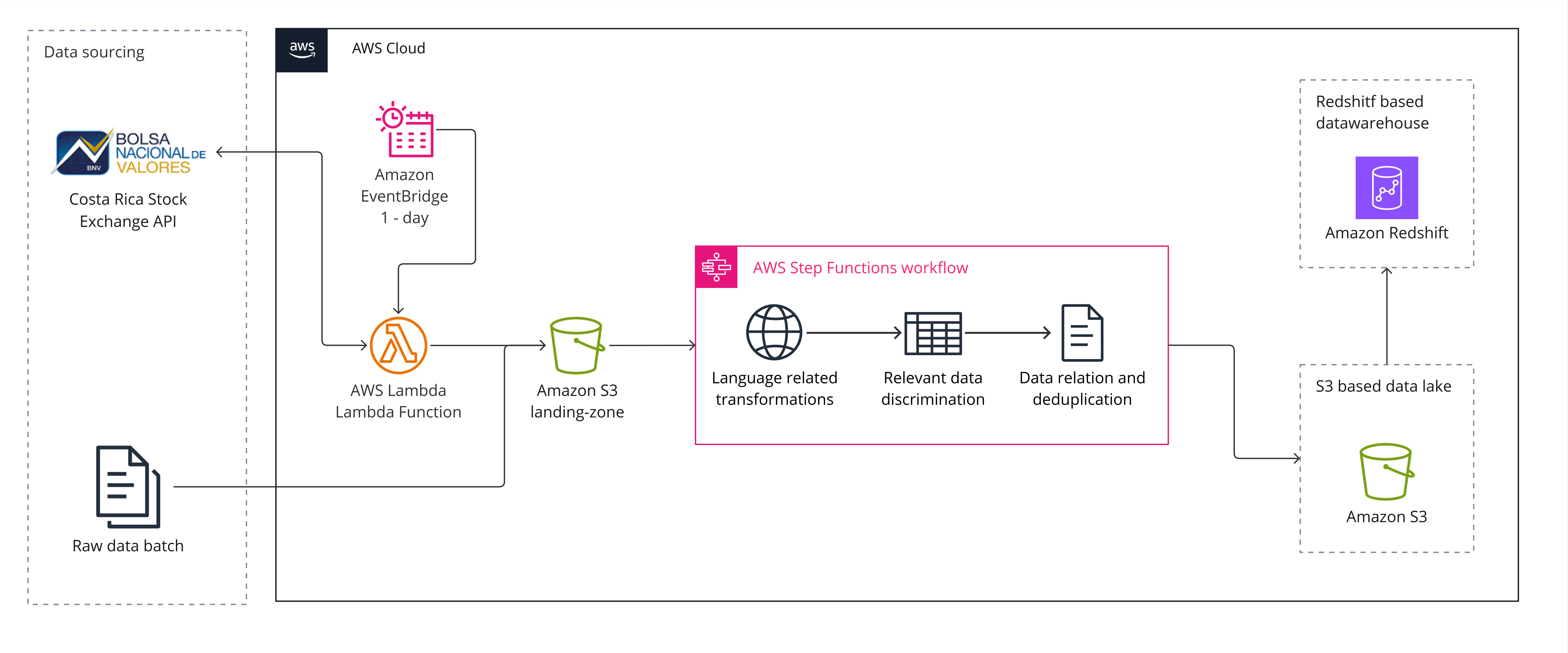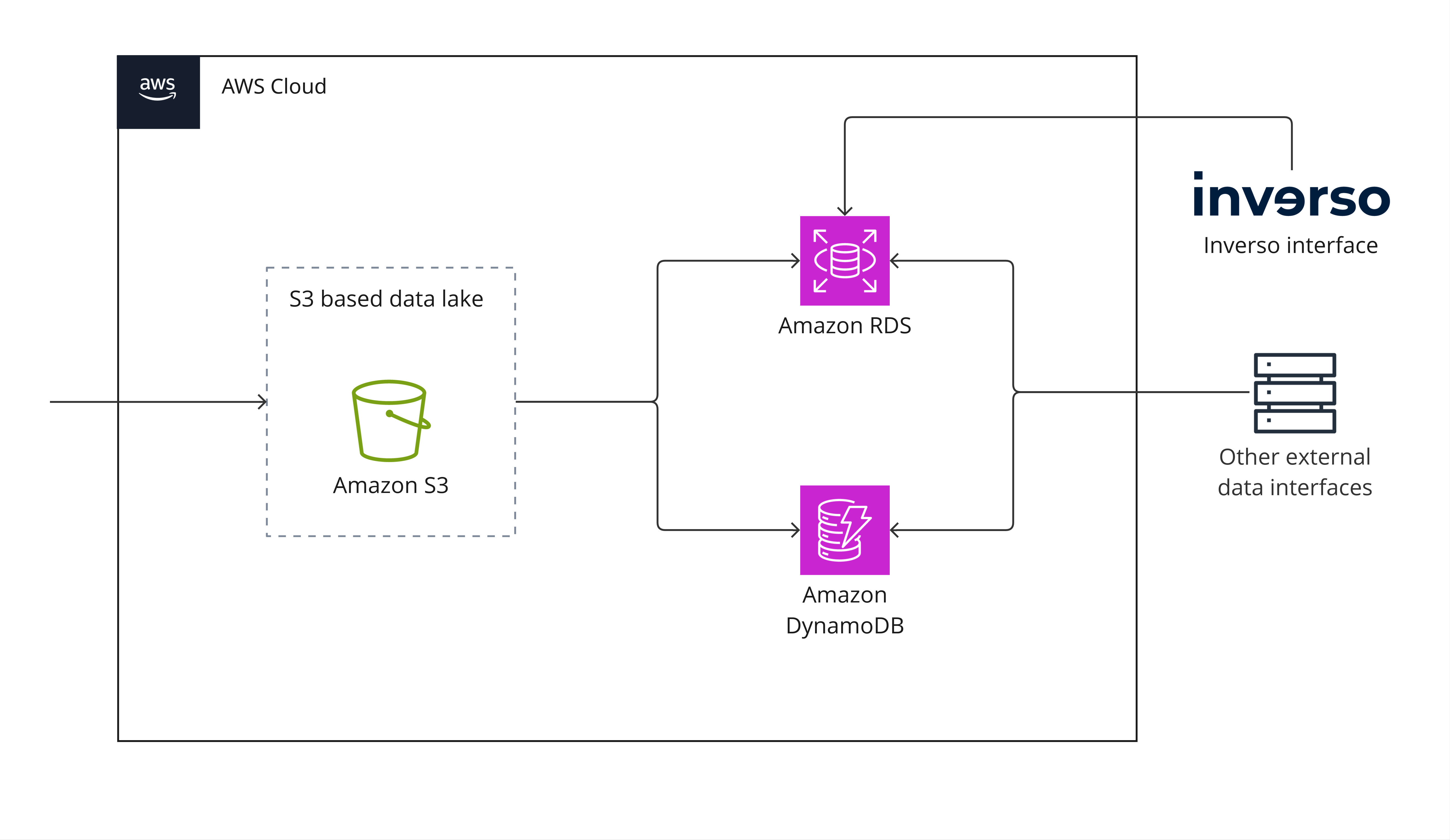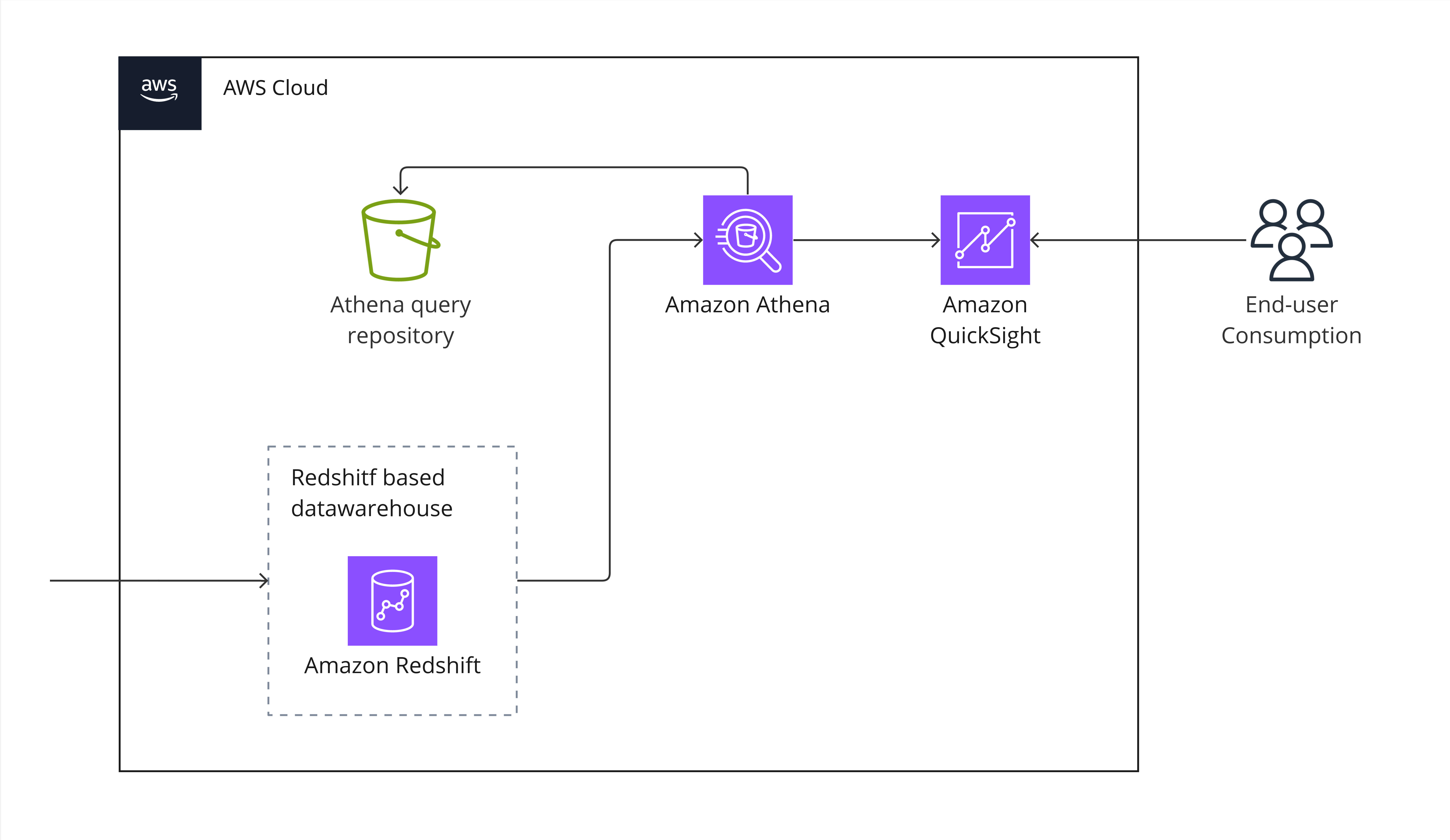This module represents the data acquisition stage of an ETL batch processing data pipeline from the Costa Rica Stock Exchange (Bolsa Nacional de Valores de Costa Rica). Also, it plays a fundamental role in the construction process of one of the several data sources for the financial analysis web application: Inverso.
This module gathers, discriminates and normalizes relevant data from daily session records of the Costa Rica Stock Exchange. Data is retrieved from the public web API of the Costa Rica Stock Exchange. Once information has been transformed, it is prepared for storage in a data warehouse or data lake awaiting further processing and insight extraction.
What is Inverso? Inverso is a web application for Costa Rica financial market analysis. This application gathers valuable information from several data sources to build insightful dashboards regarding: stock market historical records, Costa Rica public debt details, sovereign yield curves, economic indicators, and indices. Get to know the Inverso web app by clicking on the following link Inverso.
The data harvest process comprises the four phases enumerated down below. This sequence of steps transforms raw data into refined and structure information.
- Data sourcing.
- Relevant data extraction.
- Data normalization.
- Output.
The initial phase of the data harvester operates by interfacing with the public web API of the Costa Rica Stock Exchange to retrieve daily session records. Data acquisition is performed through HTTP GET requests. The resultant output is a Microsoft Excel file, encompassing approximately 43 columns and exceeding 1000 rows. The file is loaded into memory as a Pandas DataFrame for transformation in coming phases.
The raw data retrieved from the web service in the preceding phase is subsequently resized, reducing the number of columns and retaining only those pertinent for value extraction later on. Among the preserved columns, notable ones include: ISIN, maturity, price, rate, yield, currency, issuer, among others.
The dataset is normalized through string formatting, such as space removal, separator substitution, accents removal, and character lowercase; conversion of binary values to boolean type, and transformation of repetitive data into referential data structures.
As a result of the data harvesting process, the module generates enriched files in CSV format, prepared for storage in data lakes or data warehouses awaiting further processing and value extraction. Additionally, the system produces a detailed execution log for control purposes.
Examples of both refined data files and the execution log from the data harvesting process are available for reference. These can be found in the repository folders labeled "harvest_result" and "logs".
As stated before, this module constitutes an integral component within an Extract, Transform, Load (ETL) batch processing data pipeline. The intended deployment architecture for this data management system adheres to a serverless paradigm through Amazon Web Services (AWS) infrastructure. This arrangement underscores a scalable and resource-efficient approach, wherein computational resources are dynamically allocated and managed by AWS, thereby optimizing operational efficiency and minimizing administrative overhead.
The AWS architecture diagram down below describes how data flows from different sources through an ETL data pipeline, and as a result generates refined information files to be stored awaiting further processing.
An extension of the pipeline output model can be achieved through the establishment of a linkage between the resultant data lake and SQL or NoSQL databases, thereby enabling seamless integration with external services for consumption. Example given, the financial web-based application Inverso retrieves Costa Rica Stock Exchange session record data from a relational database connected to the pipeline.
Another model extension alternative presents an end-user consumption approach. The resultant files from the acquisition process undergo further processing for structured storage in a data warehouse. Through integration with services such as Athena and QuickSight, business intelligence dashboards are generated, primed for consumption, offering insights and analytics to end-users.
The Costa Rica Stock Exchange Data Harvester functions exclusively as a data processing tool, furnishing end-users with an interface for data consumption and manipulation. It explicitly disclaims any ownership or possession of the data processed through its system. Consequently, it absolves itself of any responsibility for the subsequent utilization and compliance with data rights by end-users.
This piece of software has been developed for personal purposes and is not intended for commercial profit. The primary goal of this exercise is to provide the developer a learning and research environment.
Andrés Montero Gamboa
Computing Engineering Undergraduate
Instituto Tecnológico de Costa Rica
LinkedIn | GitHub
MIT License
Copyright (c) 2024 Andrés Montero Gamboa
Permission is hereby granted, free of charge, to any person obtaining a copy of this software and associated documentation files (the "Software"), to deal in the Software without restriction, including without limitation the rights to use, copy, modify, merge, publish, distribute, sublicense, and/or sell copies of the Software, and to permit persons to whom the Software is furnished to do so, subject to the following conditions:
The above copyright notice and this permission notice shall be included in all copies or substantial portions of the Software.
THE SOFTWARE IS PROVIDED "AS IS", WITHOUT WARRANTY OF ANY KIND, EXPRESS OR IMPLIED, INCLUDING BUT NOT LIMITED TO THE WARRANTIES OF MERCHANTABILITY, FITNESS FOR A PARTICULAR PURPOSE AND NONINFRINGEMENT. IN NO EVENT SHALL THE AUTHORS OR COPYRIGHT HOLDERS BE LIABLE FOR ANY CLAIM, DAMAGES OR OTHER LIABILITY, WHETHER IN AN ACTION OF CONTRACT, TORT OR OTHERWISE, ARISING FROM, OUT OF OR IN CONNECTION WITH THE SOFTWARE OR THE USE OR OTHER DEALINGS IN THE SOFTWARE.







